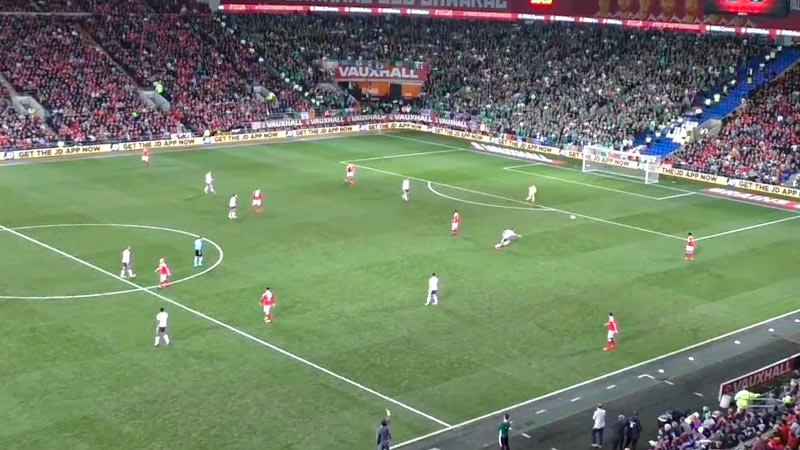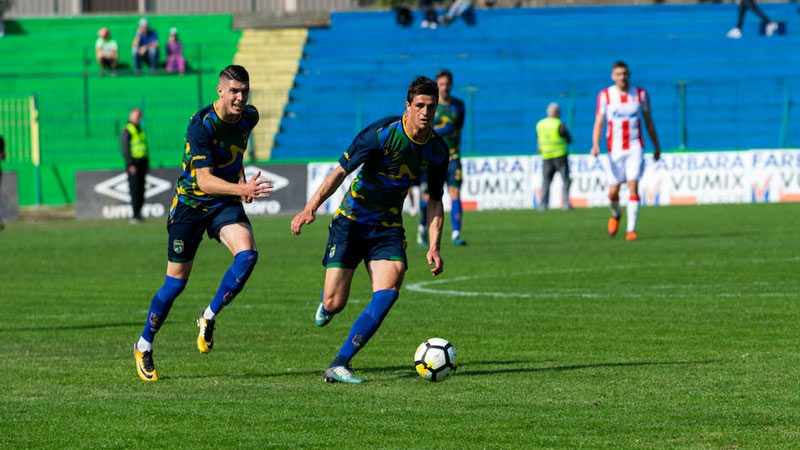No sport is fully a sport without solid formations, including soccer too!
In soccer, the 4-3-3 formation has both its weakness and strength. Most importantly, the formation is defined by both its versatile midfield and attacking setup.
No wonder why, the 4-3-3 has earned such popularity. Team managers often suggest this strategy because it can equally balance defense and offense.
Today, we will learn more about the 4-3-3 formation and how effectively it influences the sport.
Let’s begin with us!
What Is 4-3-3 Soccer Formation?
Every formation has a structure. Earlier we described it with the 3-5-2 formation.
In the 4-3-3 formation, we have 4 defenders at the back to protect the goalkeeper, 3 central midfielders who serve different purposes in the front, and finally 3 forwards with an ideal attacking formation.
The three forwards lead the attack and usually take two wingers and a central striker. The 3 key layers build up the formation and generally deliver an attacking formation.
However, different team coaches can manage and organize players differently in the 4-3-3 formation. But the most common layout involves one central midfielder being returned to a defensive position.
In this setup, this central midfielder plays the role of a holding midfielder. He then protects the four-back players to secure a goal.
To shift to an offensive position, you only have to push forward one of the midfielders. The other two midfielders will sit back while the one in front will power up the attack.
In short, the 4-3-3 formation maintains a strong defensive core while offering dynamic attacking options.
So, how does it come into play? Read with us to find out!
Origin of the 4-3-3 Soccer Formation

A rumor goes that, most of the formations originate in the World Cups. The 4-3-3 formation is no exception too!
After the World Cup Final of 1950 in Brazil, the home team Brazil used the four-man backline in this formation. The defeat from Uruguay was a heavy weight on them!
Brazil won the 1958 World Cup Championship. And experts believe that the 4-3-3 formation played a significant role in this.
In 1962, Mário Zagallo settled back into the midfield from the front line with a slight variation in the 4-3-3 structure.
Ever since then, this formation has gone through certain variations and changes. In the World Cup of 1966 in England, the champion team and the home teams used a more refined version of the 4-3-3 formation, – 4-1-2-3 formation.
They set up a more permanent defensive midfielder with Nobby Stiles.
Ultimately, the 4-3-3 formation earned much of a name around the 70s. It was not anymore limited to Brazil, Uruguay, or Argentina.
Professionals like Rinus Michels and coach Johan Cruyff encouraged the use of the 4-3-3 shape.
Benefits of 4-3-3 Formation
Every formation and structure has both sides. The same goes for the 4-3-3 formation. Here, let’s check out some of the privileges one team can have with the 4-3-3 soccer formation.
1) One thing is clear about that! The 4-3-3 formation naturally promotes attacking play. The three forwards lead the line. This leaves your team in a better position to maintain a powerful offensive role.
Your opponent’s defense will be under pressure and you can create more scoring opportunities.
2) The three central midfield do more than merely cut off opposing passes and offer support for the back four. They also focus to secure possession in the core zones with the ball. You can be creative and introduce a number of passing angles to this formation.
3) The two wingers in the 4-3-3 formation deliver their iconic role in exploiting the flanks. They can stretch the opposing defense wide and create more spaces for both the central striker and midfielders to steal the ball.
4) The midfield trio and central defensive midfielder focus on winning back possession fast! Furthermore, the wingers also have defensive responsibilities and contribute to the team’s pressing efforts.
All these are the reasons why Trent Alexander-Arnold and Andrew Robertson from Liverpool took the best advantage of this formation and became the masters of the formation.
Drawbacks of the 4-3-3 Soccer Formation

No! There is no remedy for drawbacks. Every structure in any sport has both privileges and drawbacks. For the 4-3-3 formation, the drawbacks are –
1) Ideal for both offensive and defensive setups, you must often push up the full-backs high on the field. In such cases, the defensive team can lack some of the defensive strategies. It was obvious in the surprising 7-2 win of Aston Villa against Liverpool in the 2020-21 season.
2) The center midfield is best known for balance. As good as it may seem, it can also develop a blockage in the central mid-field area. It can eventually prevent your team from a smooth transition or create effective passing lanes. It is strictly true against teams who are pressing aggressively.
3) Not only for defense, but potential shortage can also narrow down the attacking options. The wingers from the 4-3-3 formation deliver width in the field.
But it’s not unusual for them to infield drift! Ultimately, this will result in a lack of penetration through the flanks. Hence, the opposing team can build up a powerful defense centrally.
4) One risk that surrounds the 4-3-3 soccer formation is the fear of isolation. The central striker can often become isolated based on how the midfield supports from their position.
When the wingers and central midfielders are unable to provide enough support, the striker could struggle to revive the ball from dangerous positions.
Here are a few of the things you should be aware of while performing the formation.
In soccer, there are only three solid formations and the 4-3-3 is a significant one of them.
So if you are about to become a potential football player, or someone who wants to explore more about soccer formations, you should be aware of this formation.
We hope our article was useful to you. Let us know in the comment what you think of the 4-3-3 formation. You can also get regular updates on helpful soccer tips from us! Just keep an eye on our blog section!
Don’t forget to share our article with your friends and the soccer lovers around you. See you soon!







